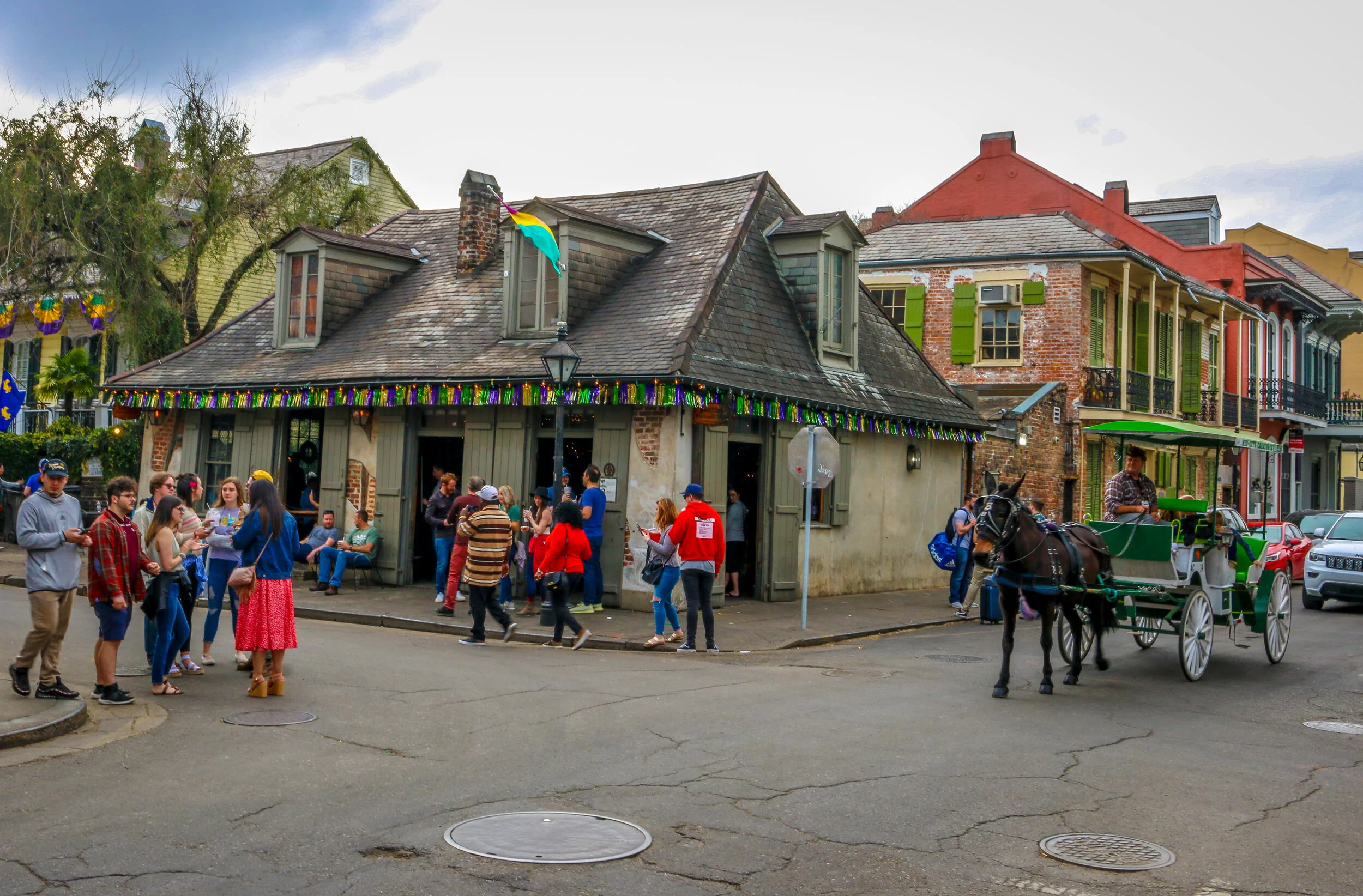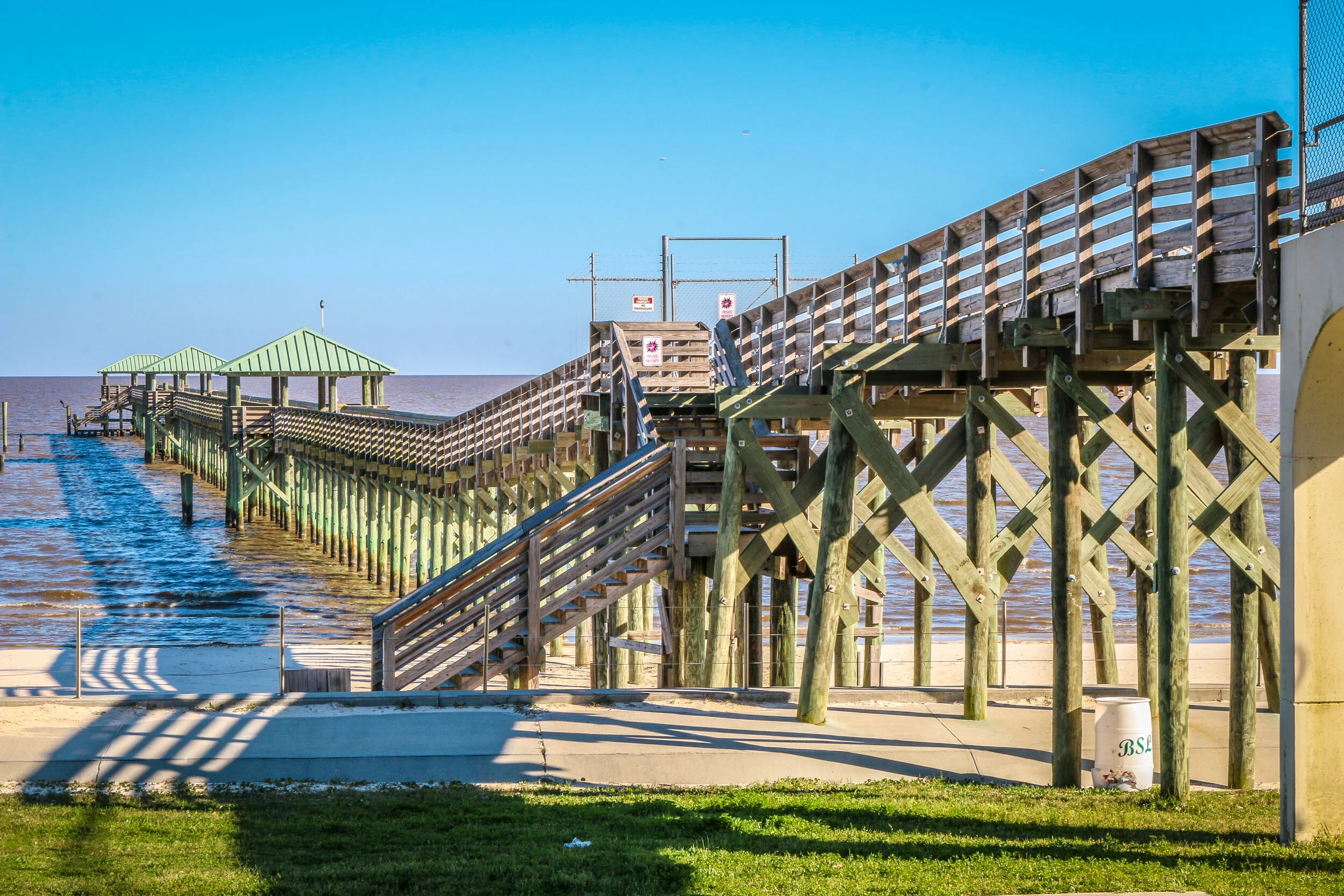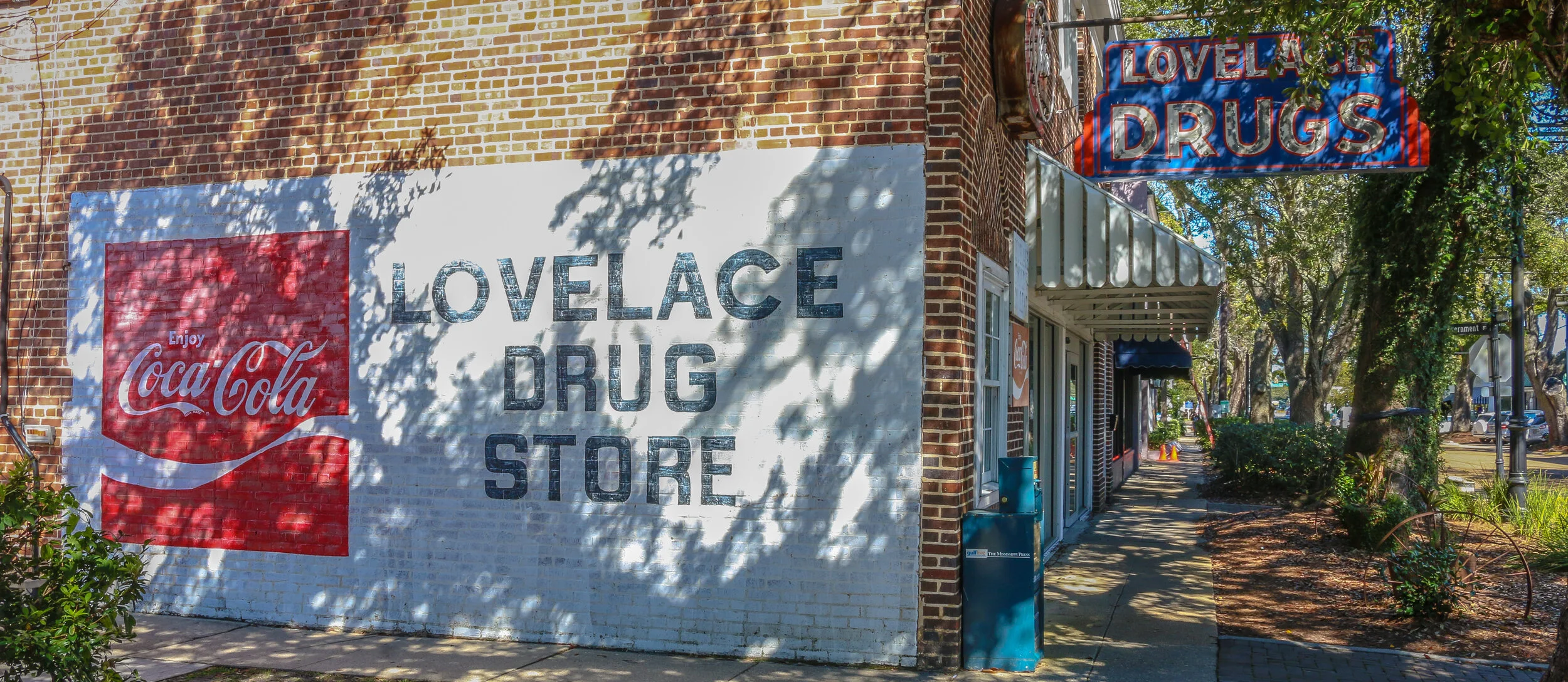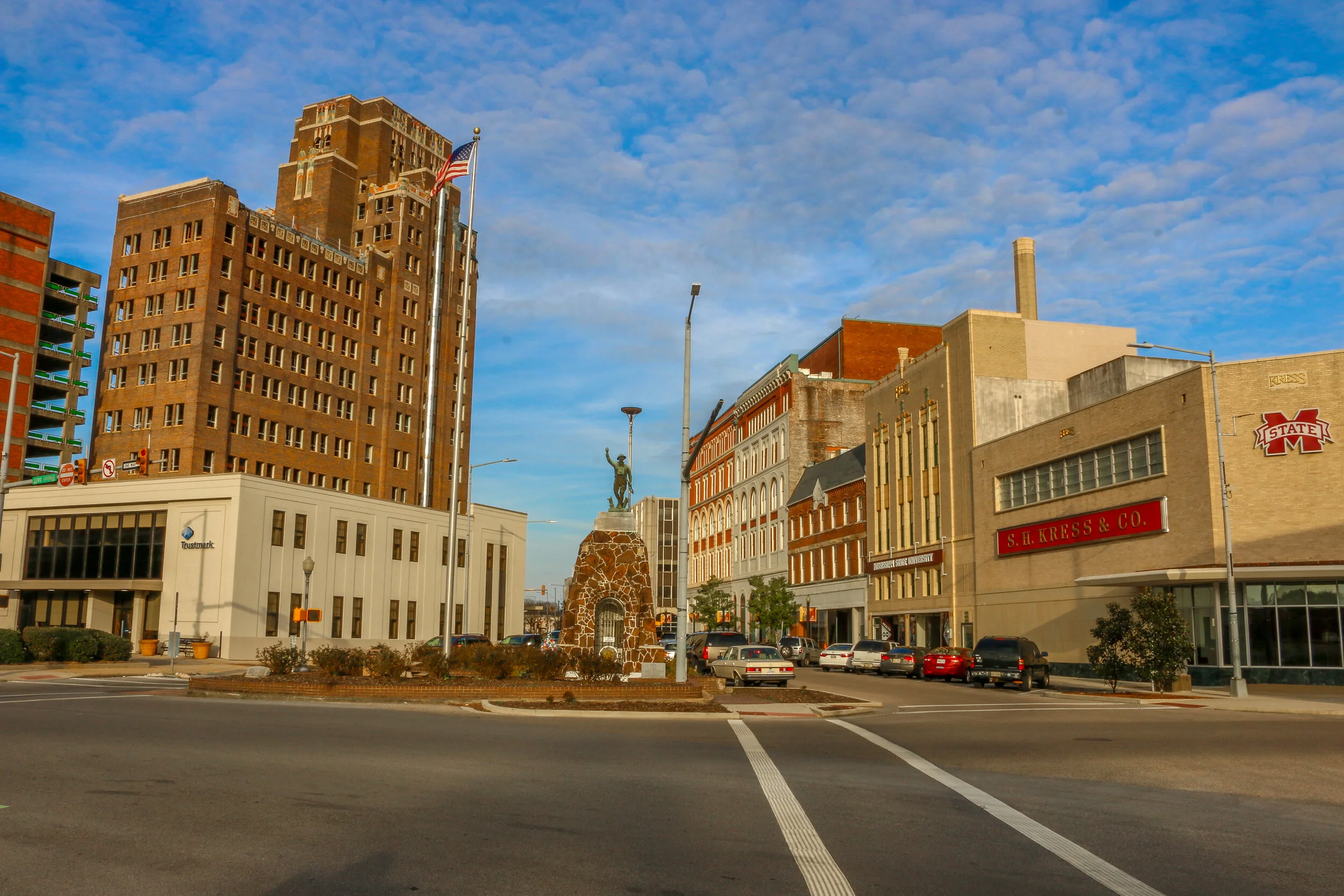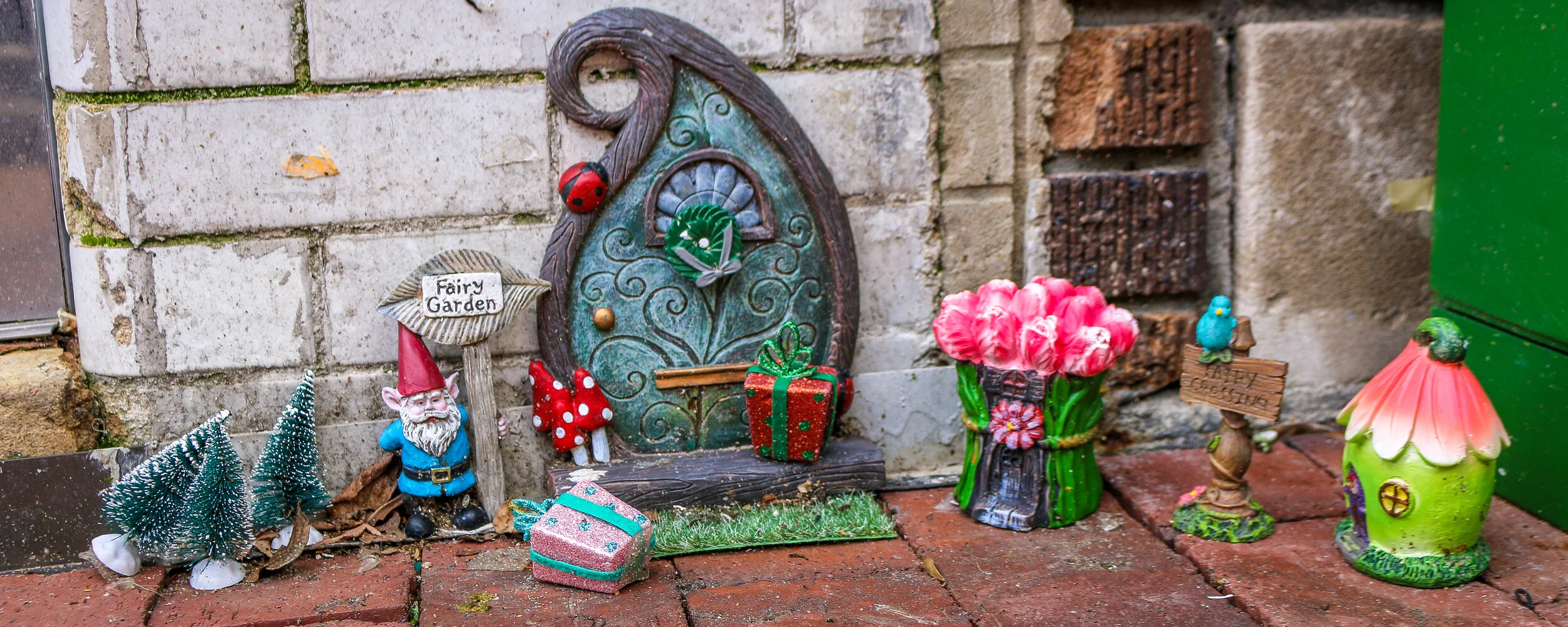Beaumont, Texas traces its roots back to 1824 when Bobby and Nancy Tevis settled on the Neches River and built a small farm. A community grew up around them called Tevis Bluff. Developers Henry Millard, Joseph Pulsifer and Thomas Byers Huling purchased all of the land in the area in 1835 and began selling lots in a town to be called “Beaumont” after Henry Millard’s wife Mary Beaumont. Lumber, cattle and rice were early drivers of the local economy, as was the port which got these products to market. That all changed in 1901 when oil was discovered at Spindletop, and America’s first oil field was developed right there in Beaumont. The town’s population tripled almost overnight and oil has been the city’s main economic driver ever since. Today, Beaumont is a quiet city of about 120,000 people, with most living outside of the downtown core. I found the city to be charming, with a lot of great historical buildings. My favorites were the Jefferson Theater and Tyrell Historical Library. I was sad to see that despite some wonderful efforts at reviving the downtown area there didn’t seem to be much going on there during my visit. Regardless, I enjoyed my stay in Beaumont and it is definitely a city I will return to in the future.
Hello everyone, I hope y’all are having a nice week out there wherever you are. March is upon us and I’m loving the warmer weather and longer days. Flowers are popping up, the clouds are clearing and spring is definitely in the air here in Texas. This week has brought me through some fascinating parts of East Texas as I begin my exploration of the Lone Star State.
After I signed off last week, I did indeed make my way out to Rutherford Beach in far southwest Louisiana. It’s not a beautiful beach, but the waves are nice to listen to, it’s quiet and nobody bothers you out there. The camping is free and you can stay as long as you want. I’ve been there before and was really looking forward to a day on the beach to relax, read, plan and give Shadow Catcher a good cleaning. It was definitely a wonderful place to be for a couple of nights and I left feeling refreshed and ready to go. Rutherford Beach is also as far west as this journey has taken me so far so it was a good place to sit and reflect back on the last couple of years and prepare to set off in a new direction: west to the Pacific.
Hello Everyone, I hope you’re all having a wonderful week out there. This is going to be short and sweet this week, because I’ve been off the road and hanging out in New Orleans for most of it. After Mardi Gras, I started in on getting the rest of my photos from Mississippi edited and published and am almost completely caught up in that regard. Many thanks to my friend, Luke, for letting me crash at his place all week and use his internet to do so. I think you’ll find some pretty great photos in these posts, from the Mississippi Delta to the Gulf Coast. I enjoyed getting these photos up and hope you enjoy looking at them. It was a fast but amazing month in Mississippi.
Other than that, I’ve been catching up with some old friends, eating some wonderful New Orleans food and preparing for my dash across Texas. I’m not going to lie, Texas is a pretty daunting state. While I’m really looking forward to it, I’m trying to come up with a reasonable plan to see as much as I can in the 2 months I’ve allotted to be there. If y’all have any awesome must-see places, please feel free to leave me a comment on this post…
On August 25th, 1699, Jean Baptiste LeMoyne, the Sieur d’Bienville was exploring the region that is now Mississippi’s Gulf Coast under a French flag and named this bay for King Louis IX. A small settlement was begun, consisting of just 16 soldiers. After the area was bought from France as part of the Louisiana Purchase of 1803, it was opened to homesteaders and thousands of people poured in from the Upper South. The town, originally called Shieldsboro, was incorporated by the first Mississippi state legislature in 1818 and it wouldn’t be until 1875 that its original name was restored. Bay St. Louis was severely damaged by Hurricane Katrina in 2005, and is still in the process of recovering from the storm. Today, Bay St. Louis is a charming little town of about 10,000 people. The downtown area is bustling with restaurants, bars and quaint local shops and the beach is a lovely place to while away an afternoon. Located just an hour from New Orleans, Bay St. Louis shares many of the Creole characteristics of The Big Easy. I loved my visit to Bay St. Louis, and found it to be one of the most livable places on the Gulf Coast of Mississippi. But don’t tell anyone that. It’ll just be our little secret. I hope you enjoy these photos from Bay St. Louis, A Place Apart on Mississippi’s Gulf Coast.
Ocean Springs, Mississippi got its start as a French colonial fort called Fort Maurepas way back in 1699. The fort was founded by the famed Canadian explorer Pierre Le Moyne d'Iberville and was used to protect French interests in the area from Spanish encroachment. The city was incorporated in 1892 as Ocean Springs, named after the natural springs found in the area. Today, Ocean Springs is an enchanting coastal town with a thriving artists community. There is a lovely beach with a pier jutting out into the gulf for fishing or just relaxing with a good book. Downtown if bustling with shops, galleries, restaurants and bars and is a nice break from the nearby casino-centered towns. I really enjoyed my visit to this quaint seaside community shaded by ancient oak trees draped in Spanish moss. It was cool to see the Mardi Gras decorations up while I was there and I even got to see the town’s Mardi Gras parade during my visit. If you ever find yourself cruising the Mississippi Gulf Coast, be sure you take a minute to stop into Ocean Springs for a look. You might just find yourself sticking around longer than you had planned. I sure did. I hope you enjoy these photos from Mississippi’s City of Discovery.
Meridian, Mississippi was chartered in 1860 at the junction of the Mobile & Ohio and Southern Railways. When the Civil War broke out the following year, Meridian was just a small town but its railroad connection made it logistically important. After the Battle of Meridian in 1864, General Sherman all but burnt the town to the ground. After the war, the town was rebuilt and quickly grew as a manufacturing center and railroad hub, and was actually the largest city in the state from 1890 to 1930. In the midst of this boom-time, Meridian’s most famous son, Jimmie Rodgers was born. He would grow up to be known as the “Father of Country Music”, although much of his style was more closely associated with the blues music he heard as a young man working for the railroad. Meridian today is a beautiful small city with a population of around 40,000. While the trains still roll through downtown, Meridian’s economy has diversified with two nearby military bases, a major regional hospital and Peavey Electronics Corporation. I’ve enjoyed watching the Renaissance of the downtown area in recent years, and the new MAX Museum is a great addition to the city. On my most recent visit, I saw a lot of new businesses opening with many more in the works which really made me happy. Of course, a stop at Weidman’s Restaurant has been a must since it opened in 1870. If you’re ever on this side of Mississippi, stop in for a night or two, you’ll be glad you did. Mississippi’s Queen City is sure to win your heart as it has mine.
Founded by French colonists in 1729, Port Gibson is one of the oldest towns in what’s now the state of Mississippi. Today, it serves as the county seat of Claiborne County and it is home to the beautiful county courthouse pictured below. Port Gibson was the site of several skirmishes during the Civil War, but most of its antebellum buildings survived because General Ulysses S. Grant called the town “too beautiful to burn”. The town’s population today is probably only around 1500 which explains why it’s so quiet. There are several beautiful old churches along the appropriately named Church Street and some great old buildings around the downtown area. I really enjoyed the wonderful, sunny afternoon I spent taking these photos in the charming town of Port Gibson.
If you know me, you know how much I love the Mississippi Delta. There is just something special in the air out there. The people, the music and the food are all incredible, and the landscapes and buildings captured my heart long ago. I know that it’s an incredibly impoverished region, and that part of what makes it beautiful is the decay that goes along with this poverty. I also know that this decay is part of what brings out tens of thousands of tourists every year and they make their ways down the Blues Trail, Country Music Trail and Freedom Trail, in search of real an authentic Delta experience. Making that work is a challenging balancing act. Places like The Shack Up Inn in Clarksdale and Tallahatchie Flats in Greenwood do a remarkable job of finding that balance. Many of these photos are from those two places. Some of these photos are dated - Po’Monkey’s doesn’t look anything like it does in these photos anymore after the passing of its proprietor Willie Seaberry, but the way it used to look is how I’ll always remember it. You’ll find that dusk is definitely my favorite time to be out taking photos in the area. I’ve been coming to the Delta for over a decade now, and I’ve seen a lot of changes - many for the better, some for the worse. Either way, it’s a place that keeps pulling me back, and every time I’m there I find some new treasure. I hope you enjoy these photos which represent some of the highlights of 10 years of traveling the region. They are my favorites.
Hey y’all, it’s time for another edition of This Week on the Road. It’s going to be a short one this week because I only really spent the first couple of days of the week on the road. Since Saturday I’ve been relaxing here in New Orleans, spending time with my friends and enjoying the Mardi Gras weekend. I did have a great few days along the coast to wind up my time in Mississippi though, and wanted to share what I got up to out there.
My week started in Pascagoula in the rain, but I quickly moved on to Ocean Springs. I really liked this quaint and quiet seaside town with its thriving artists community, pleasant bars, and good restaurants. It seemed like a vibrant and livable place. My first stop was a restaurant I’ve wanted to get to for a while: The Shed Barbecue and Blues Joint. The Shed is a South Mississippi Institution, and occupies a huge, ramshackle building just north of the interstate. The Shed is the kind of place that chains have been trying to emulate for a long time, but with little success. The place is full of old beer and traffic signs, mismatched furniture and dollar bills hanging from the ceiling. It’s the real deal though with great food, wonderful employees and an all around good feel to it. I went with the ShedHed Sampler which came with all seven of their smoked meats and three sides. For $26 I didn’t expect too much, but what came out was amazing. It was a tray piled high with food, enough to fill me up that night, and also for lunch and dinner the next day as well. It was a great meal and experience and I will definitely come back to The Shed in the future. After dinner, I went for some live music and a few beers at the Glory Bound Gyro Co. on Government Street. It was a little chilly, but not too cold to enjoy the outdoor seating area which had a beachy feel to it. I sat by the palm tree and enjoyed some acoustic music there, and later popped in for a quick beer at a place called The Juke Joint. I really liked this divey bar in a hundred year old house a mile or so from the main part of downtown as well.
I didn’t really intend to be in New Orleans for Mardi Gras this year, but after getting a late start from Washington in January and spending more time in Mississippi than I had planned, the stars aligned and I found myself pulling into New Orleans on the Saturday of Mardi Gras weekend. Normally when I’m here for Mardi Gras, I come to town at least week early to catch some of my favorite parades, see some friends, eat some of that great New Orleans food and enjoy myself. By the time Fat Tuesday rolls around, I’m already pretty tired from all of the lead-up. This year, I was still pretty fresh for the big day, and I wanted to experience some of the traditions I had either never seen before, or not experienced in the way I wanted to. I kept a loose plan in my head and allowed myself to go with the flow, warning my friends that I might break off at any moment and go a different direction. This all allowed me to have an amazing Mardi Gras, see some different sides to the experience, and gain a better understanding of the traditions of the day. I thought I’d share my my Mardi Gras with y’all in this post.
Greenwood, Mississippi is a friendly place. So friendly, in fact, that the city has welcomed a small but growing population of Fairy Gnomes to town. I inquired at the Visitor’s Center as to when the Fairy Gnomes started arriving, but was told they just showed up one day. Nobody knows where they came from or when a new group may arrive and build a tiny door to their tiny world. It seems the Fairy Gnomes do get into the spirit of the holidays though, and when I was visiting some still had their Christmas decorations up. That’s okay, so did my brother. These tiny citizens keep out of the way, and you might find their homes difficult to spot. I know I sure did. Even with a list of their addresses in hand, some took considerable effort to find. I also found a couple not on the list, so maybe their population is growing. I love everything about the Fairy Gnomes of Greenwood. They reminded me of the Mice on Main Project in another of my favorite towns: Greenville, South Carolina. I always think it’s great when a town remembers that all of its citizens aren’t adults and that a little wonder can go a long way in the world of a child.
Greenwood, Mississippi captured my heart the first time I visited it a little over four years ago. As I pulled over the bridge into the heart of downtown, I found quiet streets, well maintained historic buildings, wonderful restaurants steeped in tradition and some of the friendliest people in the world. Since that first visit, I’ve returned as often as I could, sometimes just to enjoy a nice meal, wander the beautiful downtown area and sit by the river and read my book. There are even speakers on the streets around town providing a soundtrack to the city, something I always forget until I’m there and then it has me grinning from ear to ear. Greenwood is called the Gateway to the Delta, and is truly one of the nicest towns not just in Mississippi, but in the entire South.
The land on which the city of Greenwood now sits was once Choctaw Indian land, but was ceded to the United States by the Treaty of Dancing Rabbit Creek in 1830. The Chief of the Choctaw at that time was Greenwood LeFlore, from whom the town would take its name. Greenwood would become prosperous as a shipping town, transporting cotton to markets in St. Louis, Memphis and New Orleans. When the railroad came through in the 1880s, it would cement Greenwood as a transportation hub and a cotton center of the region for years to come. Today, Greenwood is home to the Viking Range Corporation, a major employer in the city. Viking has done a great job of utilizing many of the historic buildings in town instead of knocking them down and building new ones, leaving the downtown area’s historic charm intact. The 2011 film The Help was filmed in Greenwood, as was the 1991 Denzel Washington movie Mississippi Masala. I’m surprised more movies haven’t been filmed here as it really is a quintessential small Southern city…




